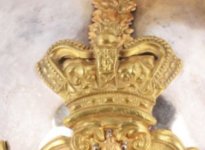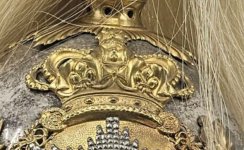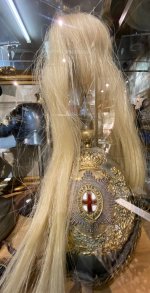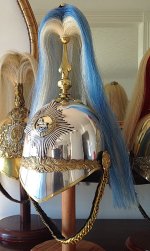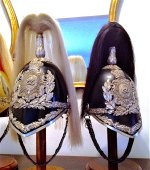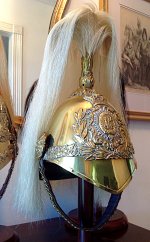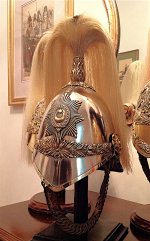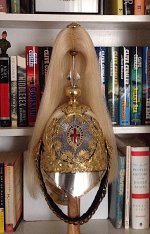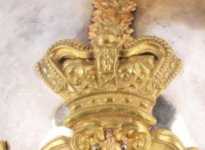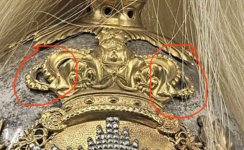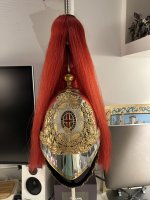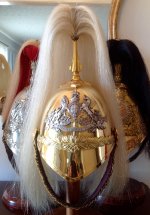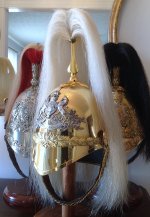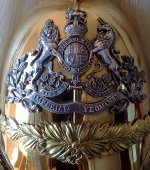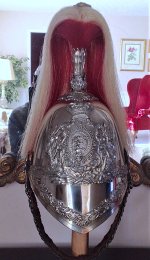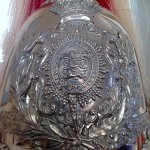Oberstoskar
New member
I joined the forum and I highly appreciate the expertise and sharing of splendid collection of historic headdresses.
I have acquired a Victorian household cavalry officer’s helmet.
From literature and photo research online, the post-1871 helmet had a few changes:
Omitted the peak gilt decorations
Changed from the the front 2 bands of gilt oak leaves and olives to laurel leaf on one side
Plume holder pike changed
However, my helmet omitted the peak decoration but retained the 2 bands of oak leaves (In the photo I am just showing the left band, which retained the oak leaves instead of laurel leaves).
I wonder if my helmet had a misplacement or it was genuinely used during the transition in 1871?
Also were there 2 versions of Victorian crowns used for the helmet plate (this version has a an extra arc at the flank and I have seen other crowns without the arc)
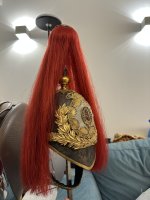
I have acquired a Victorian household cavalry officer’s helmet.
From literature and photo research online, the post-1871 helmet had a few changes:
Omitted the peak gilt decorations
Changed from the the front 2 bands of gilt oak leaves and olives to laurel leaf on one side
Plume holder pike changed
However, my helmet omitted the peak decoration but retained the 2 bands of oak leaves (In the photo I am just showing the left band, which retained the oak leaves instead of laurel leaves).
I wonder if my helmet had a misplacement or it was genuinely used during the transition in 1871?
Also were there 2 versions of Victorian crowns used for the helmet plate (this version has a an extra arc at the flank and I have seen other crowns without the arc)


